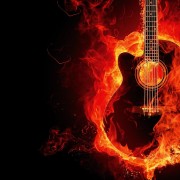
72 Summers in the Land of Shag
Come the summer of 2015, the Shag, the legendary dance of the South, will celebrate it’s 72nd anniversary of conception.
It came to pass in June of 1943 that Race Music, gut-level Rhythm and Blues, the sound later labeled Rock-n-Roll found its way onto jukeboxes along the Carolina coast. And The Southern teenagers called it Beach Music.
In response to that rolling and rocking rhythm, the Shag dance was conceived, a unique form in American terpsichorean history. Descended from West European influences as diverse as the minuet, the waltz, and the highland fling — cross fertilized with the jitterbug — the Shag began evolving the moment Beach Music found the dancers.
Flashing forward from 1943, down the decades of haphazard, hand-me-down survival, through the ’60’s and ’70’s, everybody knows the shag endured just barely. Then came SOS, an organization and a dance party, with a name the same as the international telegraph code for vessels in distress — Society Of Stranders, Save Our Ship.
And so it was, the dance was not simply saved or preserved, but transformed into something that dazzles and lives in the law of the land, immortal, so long as North Carolina and South Carolina retain official state dances.
The shag has evolved in complexity of movement never seen when my generation was fourteen, eighteen, and twenty years old. In July of this year, at the Junior SOS event, I was mesmerized, not least because the number of young kids dancing has increased so dramatically.
Twenty years ago, I wrote a best-selling book called Shag: The Legendary Dance of the South. Then you could fit just about all the junior dancers in the shag world into one three by five inch photograph. Sam West still had just about all of his hair, David Campbell still had a baby face, Matt Free looked like a poster boy for Greek week at Chapel Hill. Kristen Leggett, Sarah West, and Kristal Taylor had recently put their childhood baby dolls in storage.
It was a different time in The Land of Shag, early in the lifespan of juniors who now bring their own children to the music, teach their kids and other kids to dance. The shag was always handed down parent to child, sibling to sibling, and from what I saw in July, grandparents often impart the dance, and what is more, the manners and social grace of the post-Victorian South, such that young kids learning to shag dance today are very likely to become and remain ladies and gentlemen forever. That is rare and can open more doors to success than an Ivy League diploma.
Sam West, who now teaches juniors professionally, told me, “A lot of kids start out shy, especially the boys. Then they learn to dance and confidence comes on them they didn’t have before. Most of them make better grades in school too. I’m not sure why, but it happens.”
At Junior SOS, there were kids dancing who could not have been older than five or six. I saw little ones partnered with teenagers, grandparents dancing with grand kids, parents even dancing with each other. I saw genuine camaraderie, not just older people tolerating the young, or the young impatient to shed the company of elders; I saw respect, admiration, and love directed all around. This was a family, everyone was a member, and the blood tie was the music.
A couple of weeks later, I was in Fat Harold’s, just to look around, cause I hadn’t been there in so long. After I wrote the shag book, I disappeared to an island without a bridge and raised three kids as a single father. That’s another story.
Fat Harold’s was just about the same. There was an actual granite sculpture of Harold’s head in miniature that hadn’t been there before, and a lot of new pictures of dancers, and Camp Kemo, and party memorabilia. There was a good crowd for a Wednesday night. I ran into Johnny Barringer, one of the old boys from Myrtle Beach who came back Barringer knew everybody in the joint. I was envious of him, but nothing fundamental was changed. The music is in my blood as well. My family was where I left it, my oldest friends are here.
In the back room at Harold’s was a wall of pictures, of children now grown who were kids but twenty years ago, The Keepers of the Dance. Each was an element in the evolution of the shag, champion dancers; some students of Shad Alberty or Miss Ellen Taylor, both legendary now with charitable foundations named in their honor. Shad departed this life with wings on his heels, now has a scholarship fund named after him. Miss Ellen supports juniors, her foundation gives away hundreds of pairs of dancing shoes each year, and aids juniors however possible. The Shag Hall of Fame and The Hall of Fame Foundation are the ultimate safety net for senior boogie walkers. The Society of Stranders and The Association of Carolina Shag Clubs are the heart and muscle of the shag culture today. The Junior Shag Association, founded by Ron Alexander and his friends, currently headed by Gene Pope, is the future. All members of all the clubs and organizations devoted, anyone who ever learned the basic step is a keeper of the dance in my book.
In 2015, the shag celebrates 72 years of evolution and wedlock to the rhythms of summer, Beach Music. In The Land of Shag, the night is young forever. The music never ages.
The dance goes on for silver foxes and silver soldiers of the generation that boomed. We rocked and rolled and unveiled the power of youth to shape the future.
The torch is lit, the kids are dancing.
We venerate those who came before us, who discovered Beach Music and conceived the shag, the only first dance of The Rock and Roll Revolution. Amen.
By Bo Bryan, author of Shag: The Legendary Dance of the South








